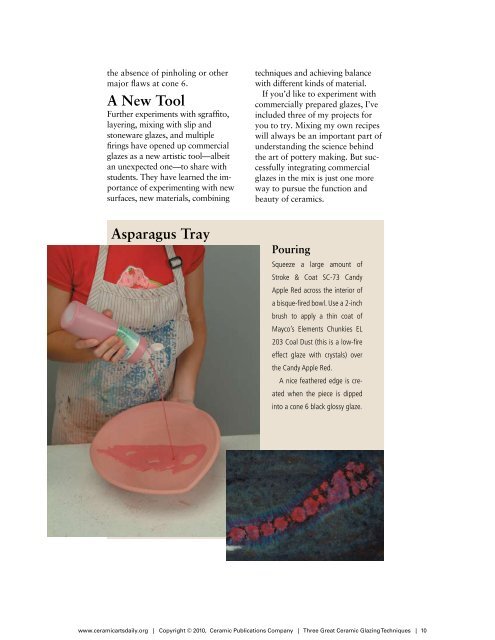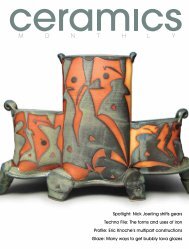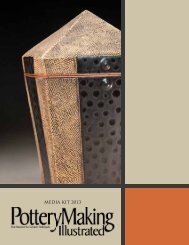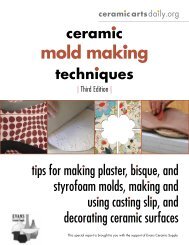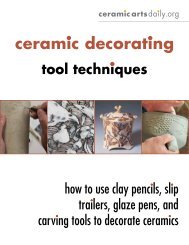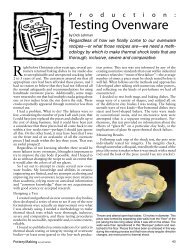Techniques - Ceramic Arts Daily
Techniques - Ceramic Arts Daily
Techniques - Ceramic Arts Daily
Create successful ePaper yourself
Turn your PDF publications into a flip-book with our unique Google optimized e-Paper software.
the absence of pinholing or other<br />
major flaws at cone 6.<br />
A New Tool<br />
Further experiments with sgraffito,<br />
layering, mixing with slip and<br />
stoneware glazes, and multiple<br />
firings have opened up commercial<br />
glazes as a new artistic tool—albeit<br />
an unexpected one—to share with<br />
students. They have learned the importance<br />
of experimenting with new<br />
surfaces, new materials, combining<br />
Asparagus Tray<br />
techniques and achieving balance<br />
with different kinds of material.<br />
If you’d like to experiment with<br />
commercially prepared glazes, I’ve<br />
included three of my projects for<br />
you to try. Mixing my own recipes<br />
will always be an important part of<br />
understanding the science behind<br />
the art of pottery making. But successfully<br />
integrating commercial<br />
glazes in the mix is just one more<br />
way to pursue the function and<br />
beauty of ceramics.<br />
Pouring<br />
Squeeze a large amount of<br />
Stroke & Coat SC-73 Candy<br />
Apple Red across the interior of<br />
a bisque-fired bowl . Use a 2-inch<br />
brush to apply a thin coat of<br />
Mayco’s Elements Chunkies EL<br />
203 Coal Dust (this is a low-fire<br />
effect glaze with crystals) over<br />
the Candy Apple Red .<br />
A nice feathered edge is created<br />
when the piece is dipped<br />
into a cone 6 black glossy glaze .<br />
www.ceramicartsdaily.org | Copyright © 2010, <strong>Ceramic</strong> Publications Company | Three Great <strong>Ceramic</strong> Glazing <strong>Techniques</strong> | 10


